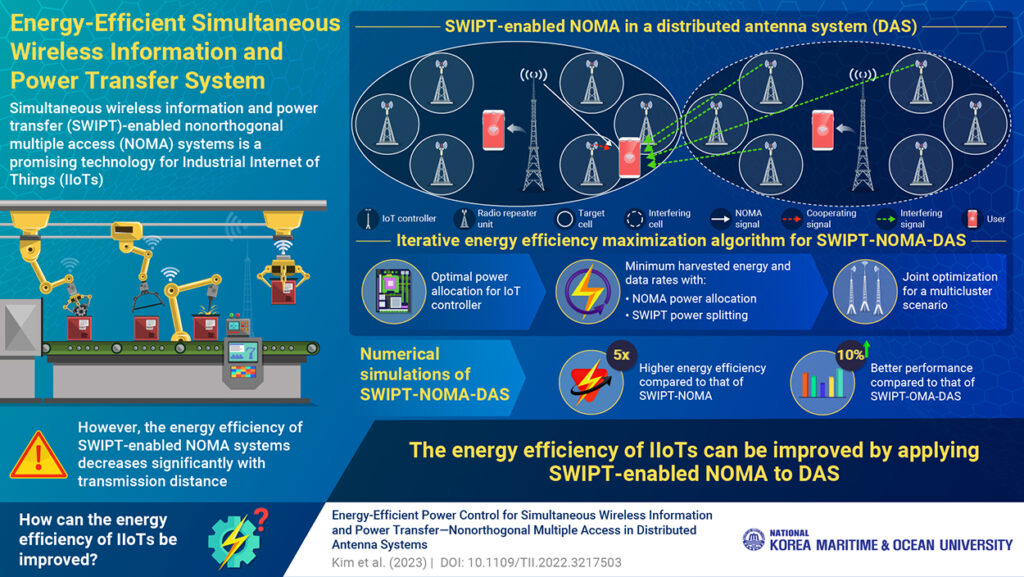South Korean Researchers Develop Energy-Efficient System for IIoT
First, there was the Internet of Things (IoT). However, as more industries and organizations connected to a larger communication network, a new technology called the Industrial Internet of Things (IIot) emerged.
What is IIoT?
The Industrial Internet of Things employs wireless sensors, controllers, and mobile communication technologies. IIoT uses these technologies to increase efficiency and improve industrial production processes. Thus, it is vital to build a resilient network for power transfer and data transmission capable of supporting various small battery-driven IIoT tools. A wireless power transfer is a promising technology to make the process work, using radio frequency signals to provide power to less-power-hungry small devices.
A promising technology
Gaining recognition today is a simultaneous information and power transfer (SWIPT)–enabled nonorthogonal multiple access (NOMA) system. This is a promising technology to enable IIoTs. SWIPT-NOMA is specifically useful since it helps extend the lifetime of various devices, including small, battery-driven sensors.
The downside of the system right now is its energy distribution, as it markedly decreases based on the central controller’s distance from the power transmission.
Resolving the issue
However, the Korea Maritime and Ocean University researchers developed a solution to address the limitation. The research team built an energy-efficient framework using SWIPT-NOMA for a distributed antenna system (DAS). This solution improves IIots’ energy efficiency and spectral efficiency. With this advanced technology, the research team believes it can open a path to more optimized and efficient environments for various IoTs.
Professor Dong Wook-Seo, leader of the research, said they could significantly reduce SWIPT-NOMA’s transmission loss due to distance by using DAS with the support of antennas closer to the edge users and the central base station. The process they developed improves energy harvesting performance and information decoding. The team optimized their proposed SWIPT-NOMA-DAS system by using a three-step iterative algorithm they devised to intensify energy efficiency.
The development process
The team’s initial step is to optimize the power allocation for the central controller. Next, they enhanced the joint power allocation for power splitting and NOMA signaling assignment for SWIPT. This phase minimizes the requirements for harvested energy and data rates. Lastly, the researchers analyzed the outage event where the system could not produce sufficient data rates and energy. They extended the power splitting assignment and joint power allocation optimization method.
The team verified their proposed method’s effectiveness by validating their algorithm through various numerical simulations. The proposed SWIPT-NOMA-DAS system provided five times more energy efficiency than SWIPT-NOMA.
Dr. Seo further explained that the proposed technology ensures efficient energy consumption and offers low power, battery life extension, and convenience. He said the new method can benefit various devices, including electric vehicles, wearable devices, laptops, and smartphones. The SWIPT-NOMA-DAS system will significantly improve resource allocation and make information transmission and wireless charging more efficient.

